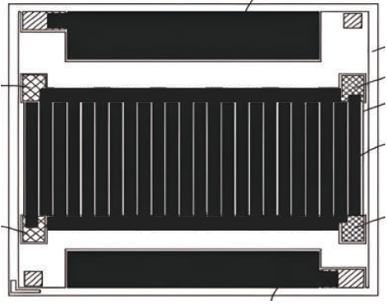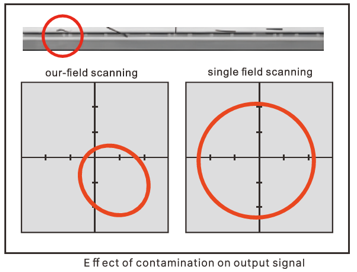Single Field Scanning Linear Scales
PINRUI's linear scale is widely used in machine tools, transmission equipment and automation systems as a position measurement system, as well as in measurement and detection equipment. Enclosed linear scale is insensitive to contamination from dust, swarf and cutting fluid, it is ideal for machine tools and work environment where contamination is severe. Due to its compact structure, it is an effective measuring device for direct drives and automated assembly lines. Opened linear scale is suitable for high-speed, precision machine tools and systems, such as production and measurement equipment in semiconductor industry, ultra-precision machine tools, measuring machines, and precision measuring equipment for linear measurement and direct drive systems.
The most important requirements for these applications are:
●High positioning accuracy
●Fast movement
●High reliability of machine tools
●Precisely adjustable speed control
PINRUI's single field scanning linear scales meet these requirements. The outstanding feature of single field scanning is its strong anti-pollution ability and high output signal quality.

Photoelectric Scanning
PINRUI’s linear scale also work on the principle of measuring reference of the photoelectric scanning grid structure. In the imaging scanning principle, for example, the G series enclosed linear scales, the scanning grating move relatively to each other. The scanning grating and the linear scales have the same or similar grid structure. Modulation of the beam: if the slits are aligned, the light will pass through; if the reticle of one grating aligns with the slits of the other, light cannot pass through. Photovoltaic cells convert these changes in light intensity into electrical signals.
Signal Generation Based on lmaging Scanning Principle
The scanning method determines the quality of the output signal, and therefore also determines the positioning accuracy and supported motion speed. The characteristics of the optical system determine that it is insensitive to various pollutions. lf the newly developed single field scanning principle is adopted, the positioning accuracy and movement speed can be significantly improved. The illustration shows a comparison of single field scanning and four fields scanning methods.

Generation of Single Field Scanning Output Signal
The scanning mask has only one large area of grating with a grid pitch slightly different from that of the grating ruler. lt generates light beats along the length of the scanning field: the grating lines coincide at some locations, allowing the beam to pass through. The grating lines at other positions coincide with the slits, and the beam is blocked. The split between the above two positions only partially coincides with this optical filtering creating a uniform signal that is very close to a sinusoidal shape. it does not use multiple independent photocells but uses a large area photocell, especially a photoreceptor with a grid structure, to produce four phase differences of 90 degrees.


Advantages of single fi eld scanning
Insensitive to contamination
The large area scanning of the entire scale width and continuous scanning of multiple scanning fields make the single-field scanning principle insensitive to contamination. Corresponding contamination tests have also proven this. Even in the simulation of large contamination areas, the linear scale still provides a high-quality output signal. The position error is far below that required by the accuracy level of the linear scale. In most cases. depending on the contaminated condition, single-field scanning can even avoid the failure of a linear scale which cannot be achieved with a four-field scanning linear scale.

This example shows the effect of contamination in the output signal
The XY coordinate display signal of the oscilloscope from the Lissajous Figure. The ideal output signal is a concentric circle. Deviation from the shape and position of an ideal circle is caused by position errors within a signal cycle (see"Measurement accuracy"), which directly affects measurement results. The size of the circle corresponds to the amplitude of the output signal and can vary to a certain extent without affecting the measurement accuracy. lt can be found that the amplitude of the grating ruler using the single-field scanning principle changes very little. The XY coordinate shows a slight change in the diameter of the circle, indicating a small position error. This contamination has a major effect on four-field scanning, however: because two scans are involved, the XY coordinates show a pattern of severely eccentric ellipses. This will cause the grating ruler to be totally ineffective in this position

The large area scanning of the entire scale width and continuous scanning of multiple scanning fields make the single field scanning principle insensitive to contaminationCorresponding contamination tests have also proven this even in the simulation of large contamination areas. the linear scale still provides a high-quality output signal. The position error is far below that required by the accuracy level of the linear scale. in most cases, depending on the contaminated condition, single-field scanning can even avoid the failure of the linear scale, which cannot be achieved with a four-field scanning linear scale.
The single-field scanning principle can greatly avoid these errors: the optical filtering principle of a large scanning field and a special arid structure makes the scanning signal generated very uniform and the sinusoidal waveform is very regular throughout the entire range of motion. Therefore, it can greatly reduce the position error of a single signal cycle. The high-quality output signal of a single field scanning allows for higher electrical and mechanical movement speeds. Due to the slight influence of speed on the signal amplitude, a stable output signal can ensure subdivision even at higher motion speeds.

This is clearly shown in the XY coordinate of the oscilloscope: the output signal of a single field scanning linear grating scales displayed as a circular shape with low signal noise
It is a prerequisite for achieving the following requirements,
●Small position error within a single signal period.
●High quality of direct drive control, i.e. controllability of speed control
●Higher and more precise
●High repeatability

Contact: Paul Lee
Phone: +86 170 9776 9619
Tel: +86 400 884 1889 / 0579-87301889
Email: sales@prdro.com
Add: No. 618, Tongan Rd, Changcheng industrial Zone, Yongkang, Zhejiang, China